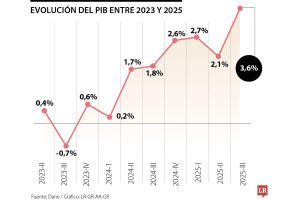There is only one problem with the chatter about Europe’s “soft landing”: its economy never truly flew. While America’s growth has consistently amazed, Europe’s has been miserable. Exclude Ireland, where national statistics are distorted by multinational companies minimising their tax bills, and the eu’s gdp has risen by about 3% since 2019, compared with a 9% increase in America.
Yet Europe’s economic outlook is undoubtedly improving. Data published on May 15th showed that the euro zone grew by 0.3% in the first quarter of this year against the previous quarter. Although a modest rise, this was the first significant growth in six consecutive quarters and enough for the currency bloc to emerge from a recession. The same day the European Commission upgraded its forecasts of eu growth for 2024. “We believe we have turned a corner,” cheered Paolo Gentiloni, the economy commissioner.
Inflation has been brought to heel, too. Figures published on May 17th showed that the annual rate of price growth in the euro zone remained steady at 2.4% in April, only a smidgen above the European Central Bank’s (ecb) 2% target. Core inflation, which excludes volatile food and energy prices, fell from 2.9% to 2.7%, meaning that disinflation is being driven by more than just the collapse of gas prices, which have fallen to around a quarter of the level they reached in 2022. Encouragingly, this has been achieved without extra joblessness. The eu’s unemployment rate was 6.1% in the first quarter of this year, just above its lowest since the turn of the millennium.

The continent’s south—traditionally its laggard—has grown faster than the north, with Italy outpacing both France and Germany. In part, this is because of the eu’s recovery fund, which was launched during the depths of the covid-19 pandemic but is still pumping out funds. Southern Europe also “just does better when inflation is a bit higher,” notes Claus Vistesen of Pantheon Macroeconomics, a consultancy, since rising prices make heavy debts more bearable. Meanwhile, northern Europe suffered more from higher gas prices after Russia’s invasion of Ukraine.
With inflation less of a problem, monetary policy can now support Europe’s recovery. A handful of the continent’s central banks have already cut interest rates. Hungary, which started raising them earlier than most countries, has now reduced them seven times. In the Czech Republic rates have fallen to 5.25% from 7% in December. Sweden’s Riksbank, a bellwether for the ecb, cut for the first time on May 8th. Markets expect the ecb to lower its policy rate three times this year, starting on June 5th. By contrast, they expect America’s Federal Reserve to cut just once.
Companies are taking advantage of this transatlantic divergence. Sales of “reverse yankee” bonds, as euro-denominated debt sold by American issuers is known, have rocketed. According to Bank of America, if the trend of the first four months of 2024 continues for the rest of year, sales of such debt could eclipse the $88bn seen in 2019, when negative interest rates in Europe contrasted sharply with a post-financial-crisis peak of 2.5% in America. Many of those bonds—issued with five-year lifespans—now also need to be refinanced. The debt is mostly used to fund American firms’ European operations.
A real economic take-off would require higher productivity and genuine investment. Much of the recovery has so far come from domestic demand: Europeans are in employment and lower energy prices have increased their spending power. At the same time, however, productivity, as measured by gdp per worker, has fallen since 2022. Unless it starts to rise, Europe will in all likelihood fall further behind America. Indeed, the imf forecasts that European gdp per person will drop from 68% of America’s in 2019 to 66% by 2029. The continent has emerged from the gloom of the past few years. Now for the hard part.







